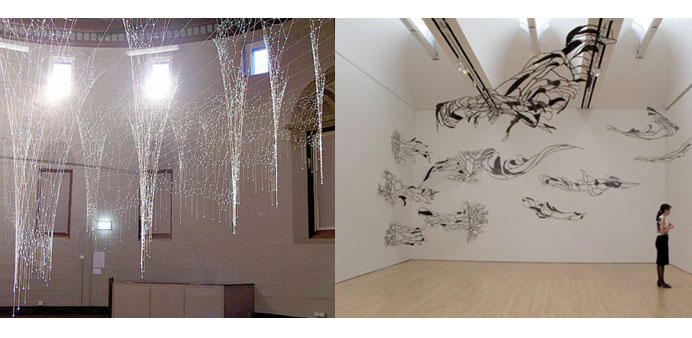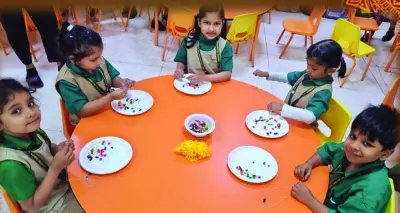By Umer Nangiana
The journey from mind to a completed material work is an active combination of idea, medium and philosophy. The destination is not always obvious at the beginning and that uncertainty sets her on a path of searching that can lead to unexpected places.
Indian artist Ranjani Shettar will be speaking about her art of sculpture and how she has practiced it at Virginia Commonwealth University-Qatar (VCUQ) today as part of the lecture series, Crossing Boundaries.
Speaking at ‘My practice in a nutshell,’ the Indian artist will be discussing how her sculpture is a concrete version of her experiences, “those transient feelings and environments that exist purely because of perceptions.”
She sees these environments as being constructed to be experienced rather than seen. Shettar is best known for her large scale sculptural installations, using modern and traditional crafts to sculpt natural and industrial materials to create multidimensional works.
Familiarity with the medium helps in the exploration of the piece, but as she is constantly shifting her choice of material, challenges are created. As she chooses a path to tread, she becomes more comfortable with the work itself. At that point she stays longer, diving more deeply into the artwork.
“An advantage of the drawn out process of creating sculpture is this ability to immerse yourself into the work and its creation. That complex understanding of a sculpture built over time, where technicalities and tools are no longer getting in the way, is the most comfortable position,” says Shatter.
Giving her time to linger and enjoy, but also making it difficult to tear herself away when the studio process ends. This particular approach to working on a project becomes habitual and can appear unintentional to her.
Born in 1977 in Bangalore, India where she presently lives and works, Shatter received her Bachelors in Sculpture in 1998 and in 2000, Masters in Sculpture from Karnataka Chitrakala Parishath, Bangalore.
Shettar creates sculptural installations that combine elements of nature and industry using a range of materials that include, beeswax, sawdust, wood, latex, PVC tubing, silicone rubber, and metal.
Shettar’s work is in the collection of the San Francisco Museum of Modern Art and has been the focus of several solo exhibitions including The Institute of Contemporary Art (ICA), Boston, MA (2008), The Modern Art Museum, Fort Worth, TX (2008–2009).
Her group exhibitions include, Freeing the Line, Marian Goodman Gallery (2006), Zones of Contact, XV Sydney Biennale, Australia (2006), 9th Lyon Biennial, France (2007), and Life on Mars; 55th Carnegie International, Carnegie Museum of Art, Pittsburgh, PA (2008).
In 2009, Shettar created a group of smaller sculptural works. Bird Song is created from muslin and steel with curving, lyrical lines suggesting feathers and flight. The Bird Song sculptures hang like floating musical notes of a melody and resonate with a transient beauty found in nature.
In another work, muslin cloths textured like weather worn skin are stretched into five organic forms, each seemingly compliant to a pull that makes known its delicateness with a gentle opening.
‘Waiting for June’ is composed of small bake terracotta shells that reveal tender cracks that are suggestive of parched earth, poignant yet beautiful.
In Shettar’s sculptures and installations, she creates environments that combine the two realms; man and nature, together with graceful and dynamic forms and textures.



